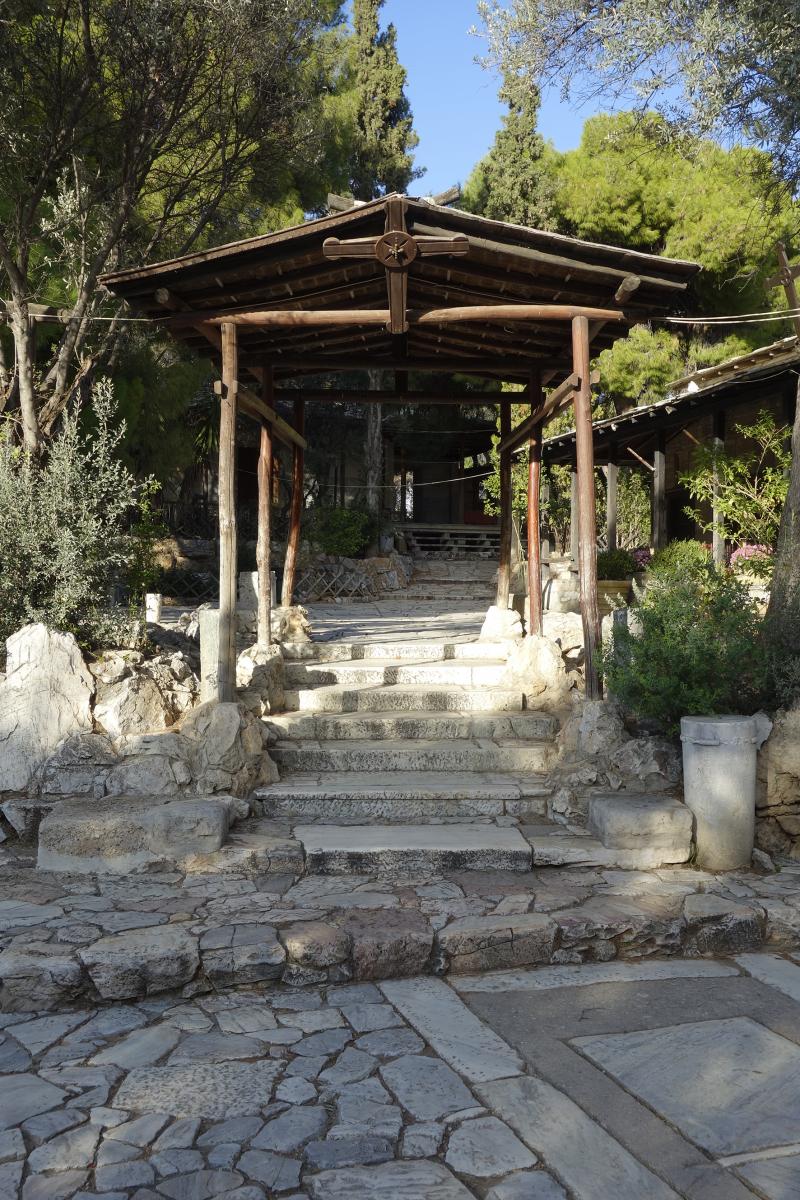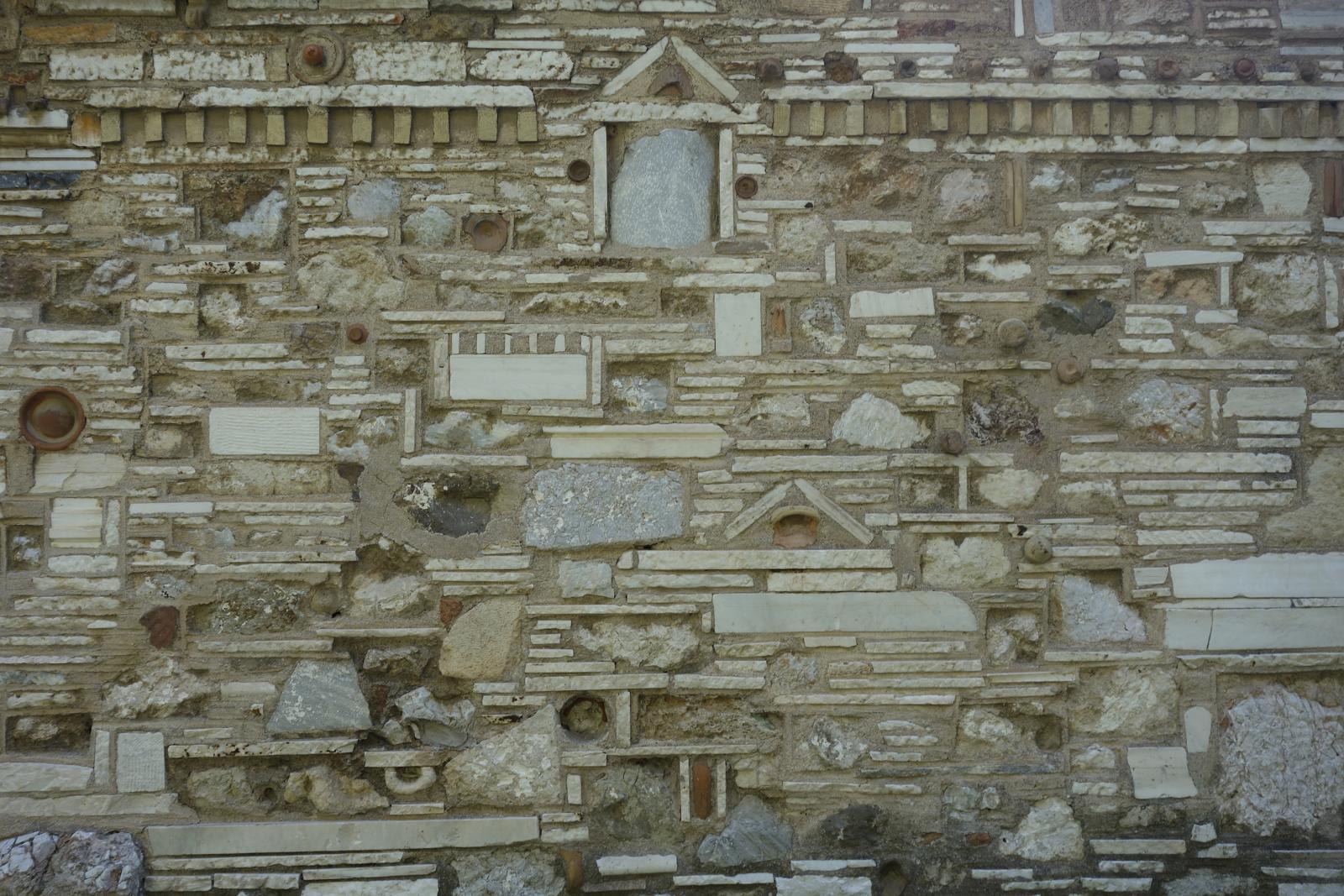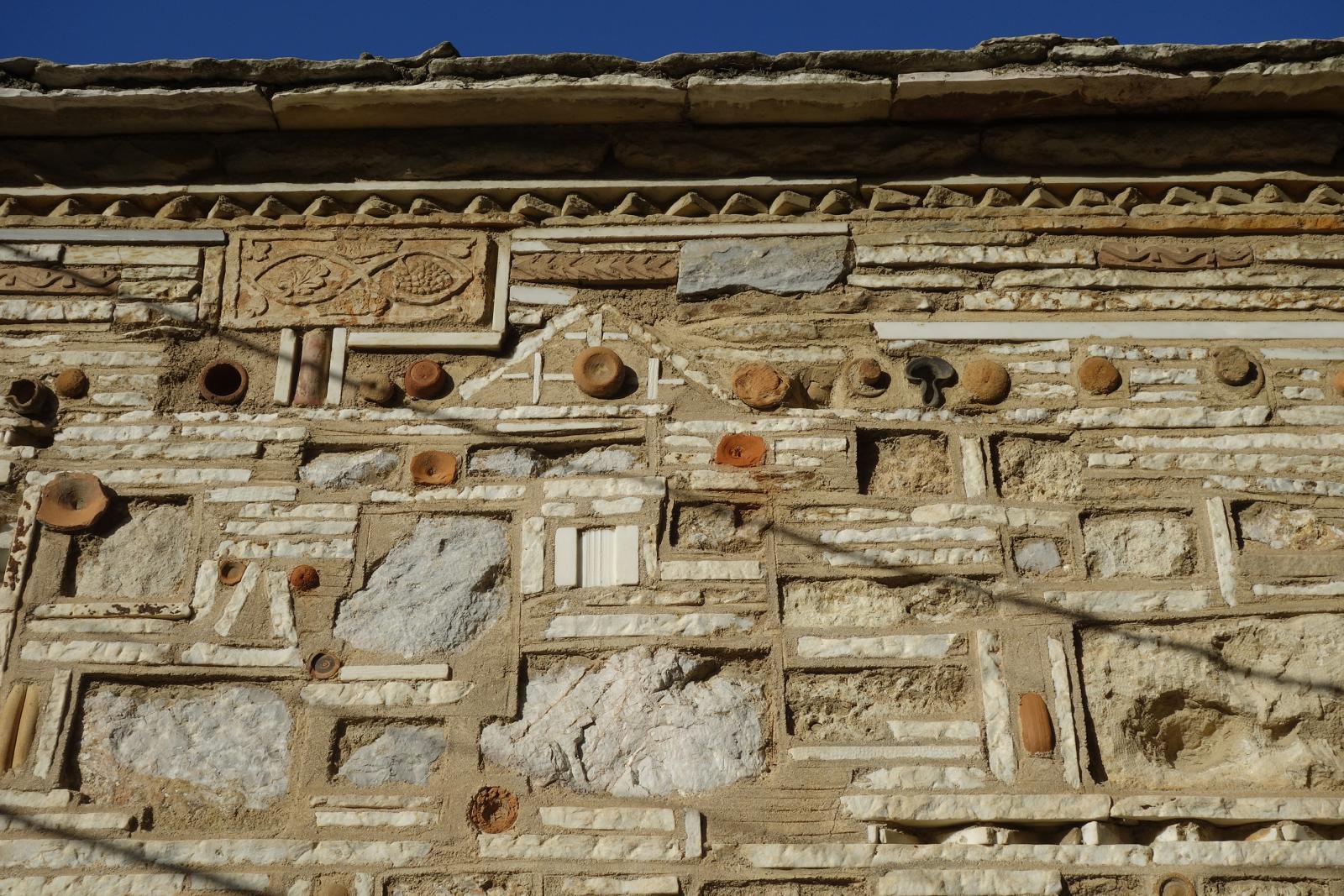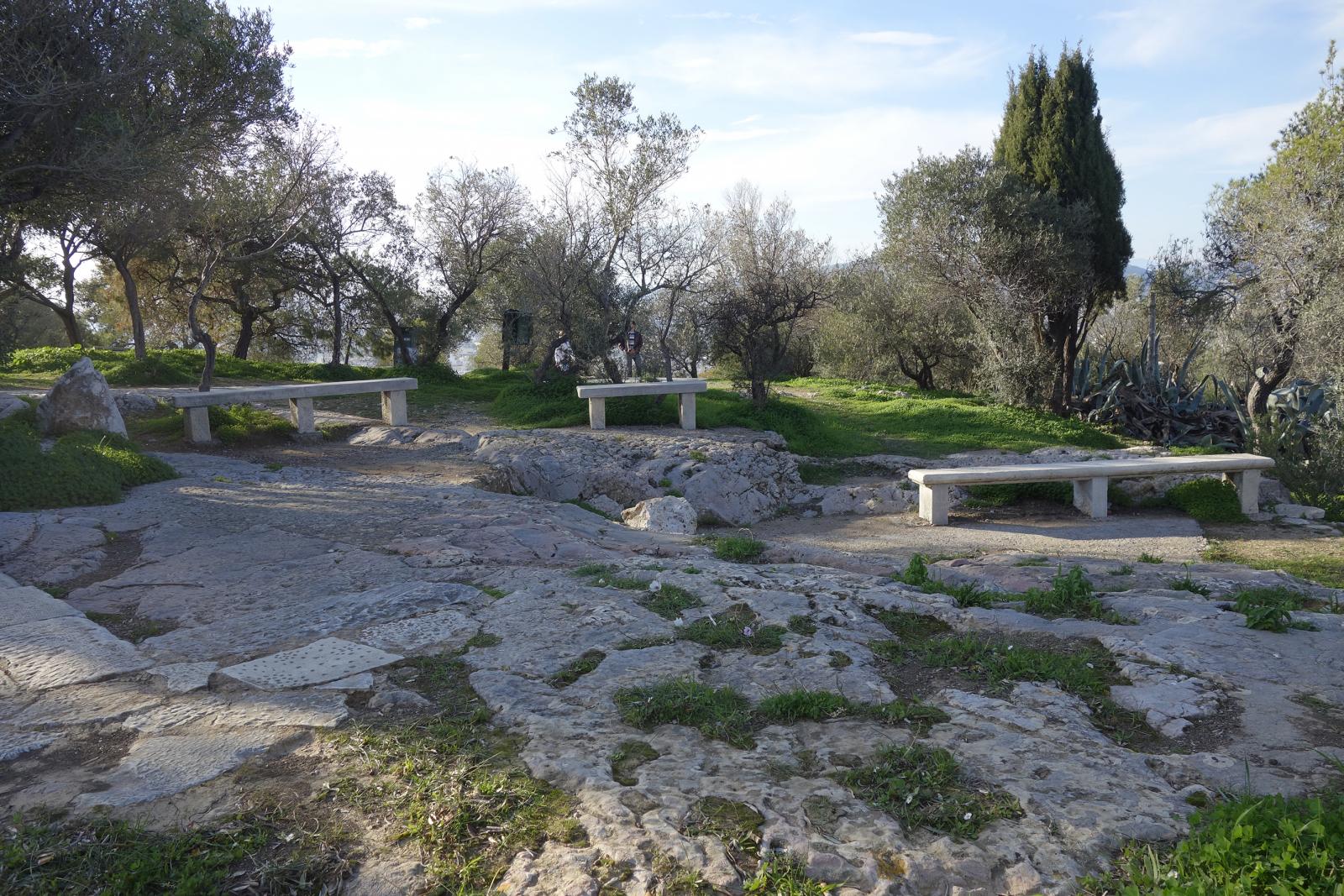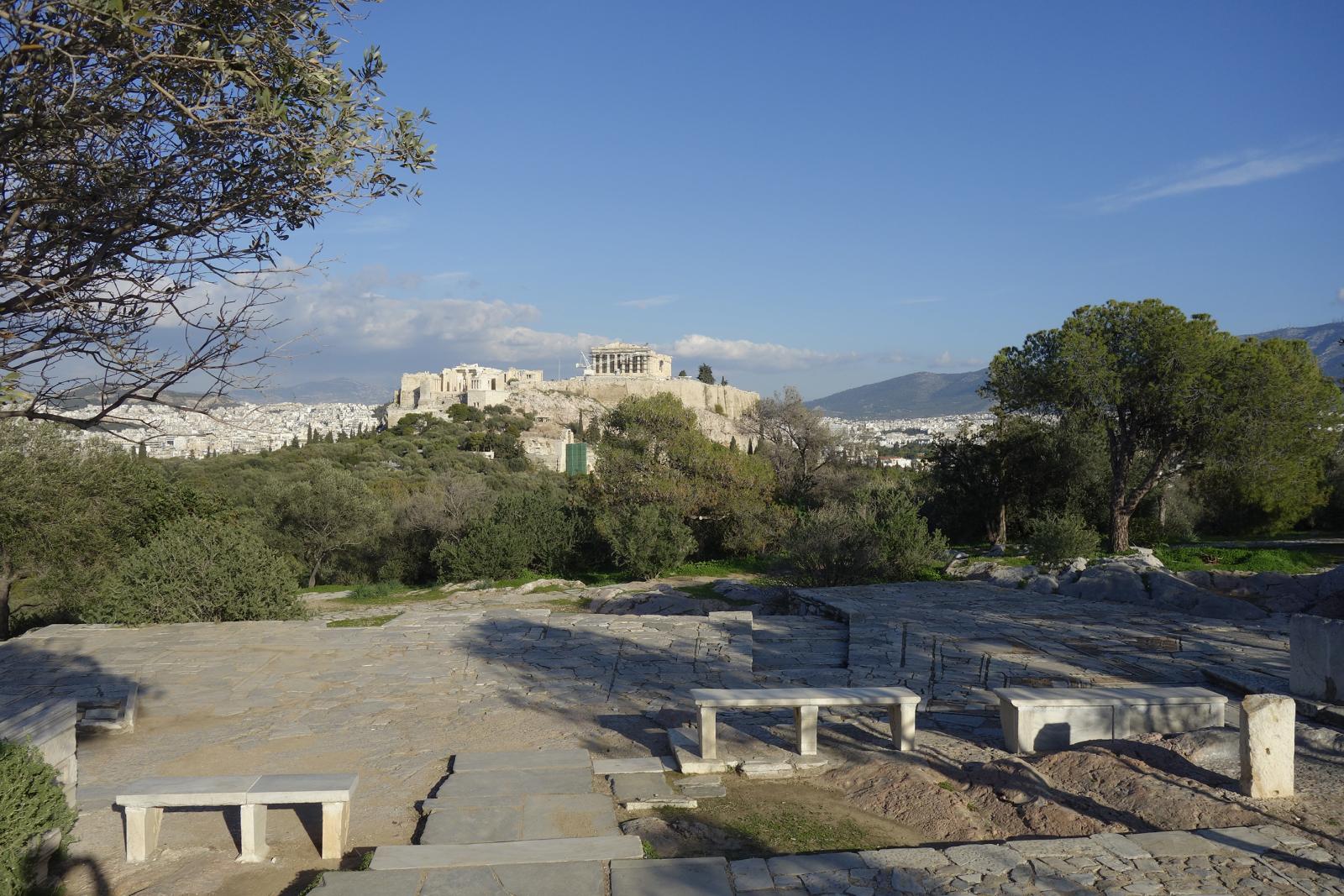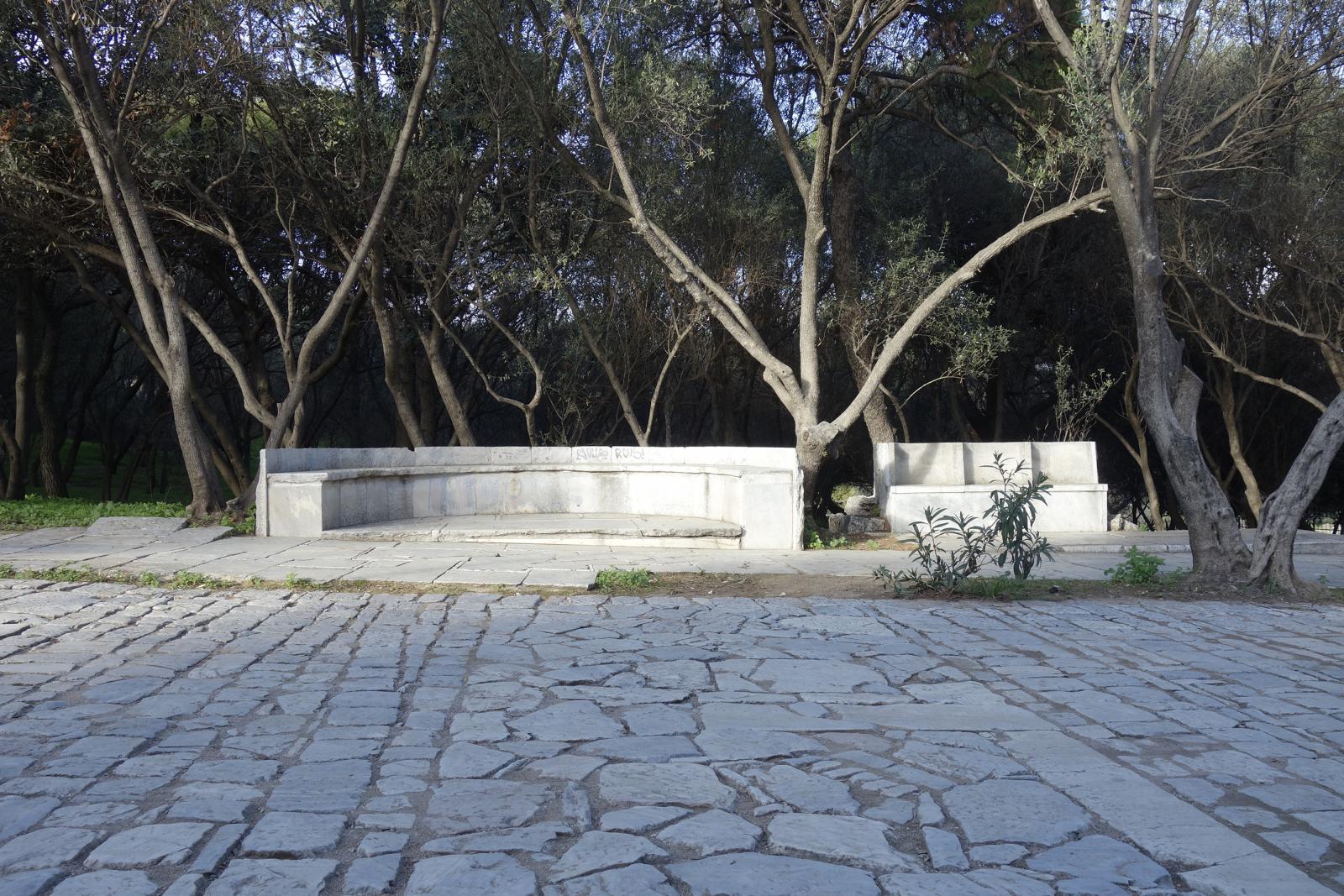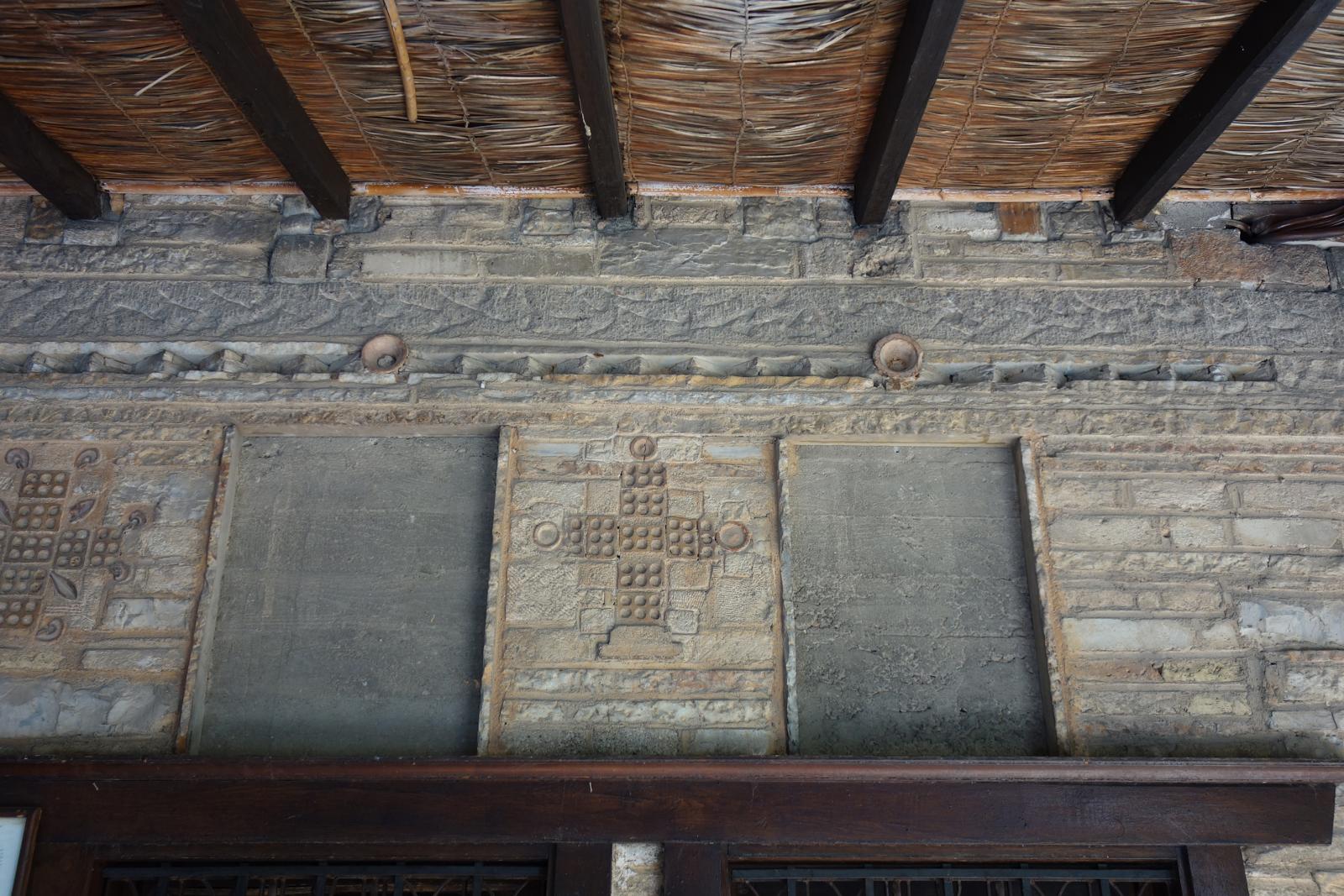The dream-thoughts we can understand without further trouble the moment we have ascertained them.
The dream-content is, as it were, presented in hieroglyphics, whose symbols must be translated,
one by one, into the language of the dream-thoughts.
Sigmund Freud, The Interpretation of Dreams
Any effort to approach Dimitris Pikionis is tantamount to the effort to decipher a myth. The theoretical engagement with his texts soon leaves multiple questions unanswered as the myth surrounding him creates a distance that discourages research and hinders access (Kotionis 1998). Respectively, his work is as original and unique as it is distant and personal and cannot be easily categorized into stylistic genres or historical movements running the risk of remaining virtually unknown as to its sources, its philosophical background, the theory that generates it. However, if Pikionis seems ‘exotic’, obscure or distant, this is because he is usually disconnected from his natural space, his historical context and the broader intellectual pursuits of his time (Condaratos 1989).
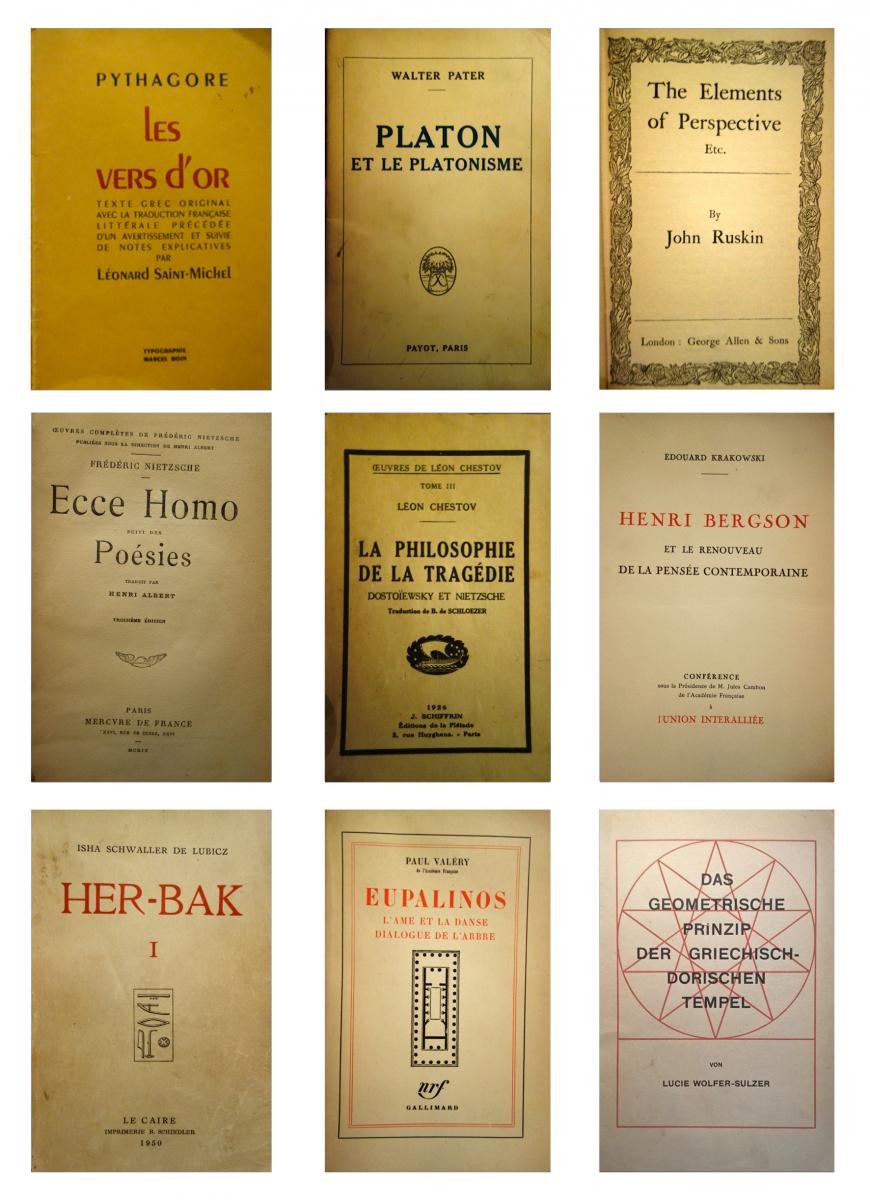
1 | Βooks from Pikionis’ personal library, © Kostas Tsiambaos.
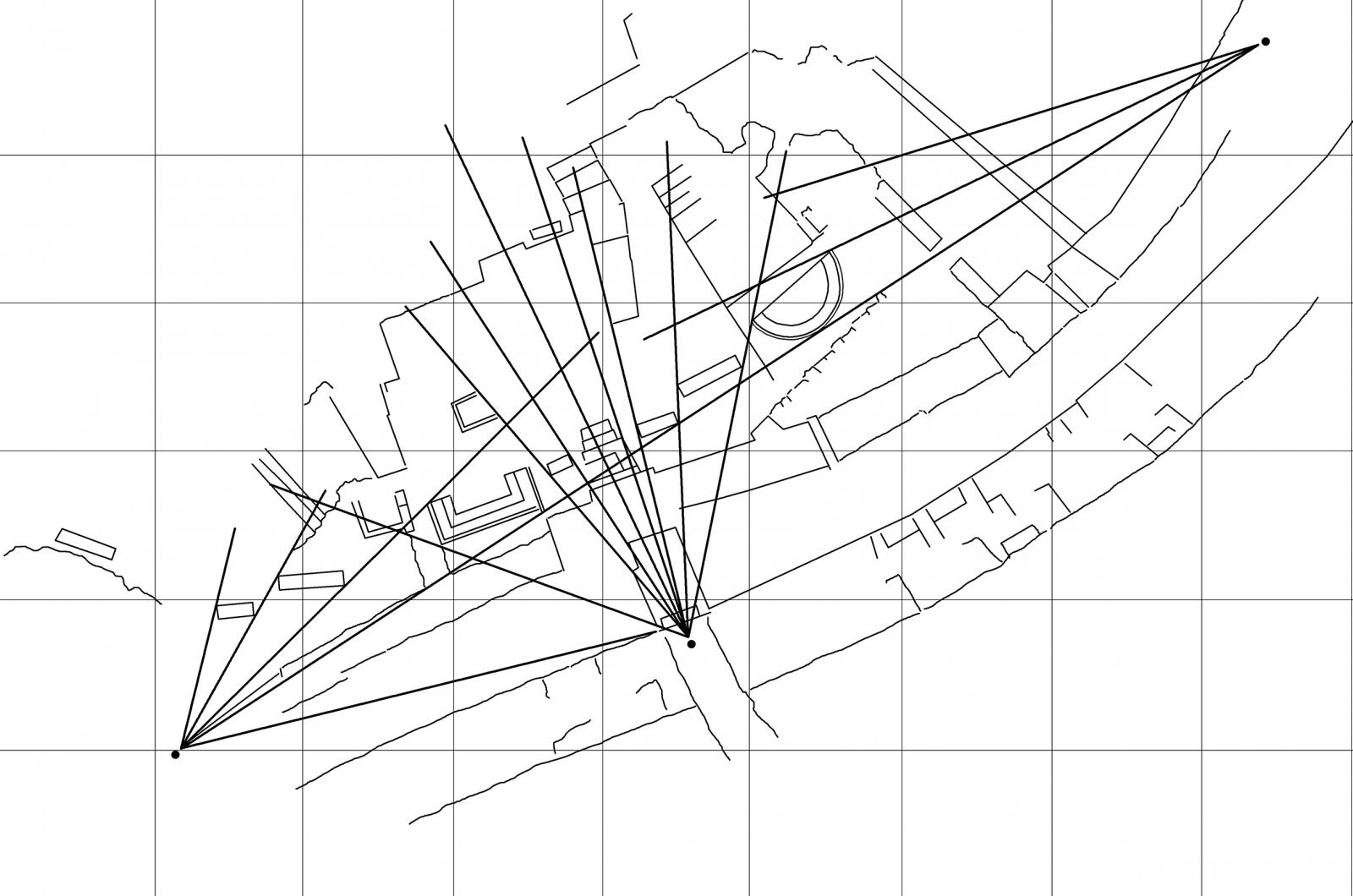
2 | Pikionis’ use of optical traces (Doxiadis theory) on the belvedere of Philopappos Hill, drawing by the author, © Kostas Tsiambaos.
3 | The ‘Japanese’ gate of St. Demetrius, photo by the author.
4 | One of the walls of St. Demetrius, photo by the author.
5 | One of the walls of St. Demetrius, photo by the author.
6 | The benches on the belvedere, photo by the author.
7 | The benches facing the Acropolis, photo by the author.
8 | Pikionis’ benches in dialogue with the trees, photo by the author.
9 | The visible concrete beams of St. Demetrius extension, photo by the author.
A rough collection of Pikionis’ diverse citations, as found in his texts, would surprise us: Plato, Saint John Climacus, Coleridge, Ruskin, Goethe, Nietzsche, Bergson, Schelling, Schiller, Guadet, Cezanne, Rodin, Klee, Spengler, Chestov, De Chirico (Santoro 2008, Santoro 2018), Tagore, Sikelianos (Tsiambaos 2018b), Pascal, Montaigne, Rousseau, Voltaire, Jung, Shakespeare, Dickens, Tennyson, Blake, Chateaubriand... [Fig. 1] These figures, along with many others, coexist in Pikionis’ talks (Philippides 2009) and manuscripts, communicate with each other and cross paths unexpectedly, forming a vast body of multivalent influences. On the other hand, the fact that Pikionis often appears to express himself through various Platonic, Nietzschean or Bergsonian terms and concepts does not mean that he was necessarily interested in these philosophies themselves. What attracted him was the ability to move through all these intellectual schemes, in order to become familiar with them, to appropriate them, so that he can ultimately formulate a personal discourse, his own ‘viewpoint’.
As a resident in Munich and Paris in the early twentieth century, Pikionis circulated in an environment where the afore-mentioned ideas were diffused. It was in Germany where Pikionis visited Hans von Marées, Fiedler’s close friend and follower. Through this acquaintance, Pikionis appropriated the concept of intuition in which he recognized a form of Aristotelian catharsis, where the dramatic spectacle, through vision, ‘touches’ and ‘purifies’ the soul of the viewer. It was within this cultural landscape that Pikionis, like many other architects and artists of his generation, moved and collected pieces from different sources. Neoplatonism, romanticism, existentialism, vitalism, anthroposophism, mysticism etc. were contained retrospectively in his own worldview; a worldview that could intellectually link Plato to Nietzsche, Indian philosophy to Einstein's theories, sacred geometry to biology, the human body to the movement of the planets, the physical world to the evolution of civilization, History to Utopia, the past to the future (Tsiambaos 2018a).
In the landscaping of the area around Philopappos Hill (1954-58) - “the most important, the most original and at the same time the most Greek monument created by our era” according to Pikionis’ much-loved student Constantinos Doxiadis (Doxiadis 1968) - we can see the most advanced use of optics as a design tool [Fig. 2]. In this, the most famous of Pikionis’ works, a well-balanced system of optical alignments based on the system ‘discovered’ in 1936 by Doxiadis (Tsiambaos 2018a) links the old and new buildings with Nature (the rocks, the trees, the sea, the mountains) and History (the Pnyx, the Odeon of Herodes Atticus, the Acropolis). On a continuous path, vantage points are carefully chosen from where all the above are organized within the visual field. Before one enters the church courtyard, they pass beneath a wooden ‘Japanese’ gate [Fig. 3] which aims to highlight the transition from one world to another, an entrance to a space of symbolic images, hidden messages and secret meanings. In front of the gate, the floor is organized according to a fine-tuned system of optical alignments and attracts one’s gaze towards the different structures in the space through optical-geometric relationships (Papageorgiou-Venetas 2010).
Around the church of St. Demetrius, the number of symbolic images increases and the visual impressions become richer and denser. The old church was extended, clothed entirely in a new symbolic ‘garment’ on which disparate forms of a single continuous tradition come together [Fig. 4]. It was not only the pieces of ruined neoclassical houses, the stone and ceramic fragments of the Attic land, that were embedded in the floors and walls: the wall becomes a field where objects, elements, and figures from Ancient, Christian and Modern Greek history and mythology coexist: urns, Kouroi, horses, ancient Greek deities, Christian saints, wooden boats, archaic gates, eagles, deer, rosettes, spirals, coils, meanders, warriors of antiquity and heroes of the Greek Revolution of 1821, medusas, trees, fish, flowers and plants, lions, and ancient temple façades… As long as one can decipher what they see the walls of the church ‘speak’, narrating mythical incidents and activating the historical memory [Fig. 5].
If one passes by the church on foot, they will find a wide footpath ahead of them (Ferlenga 2014). This footpath will lead them up a slight uphill slope to the top of the hill. The route culminates in a broad plateau, a belvedere. Up there one sees a few marble benches and small stone structures freely positioned. Scattered in the belvedere and distanced from one another, all the benches face in the same direction, as if a distant magnet is drawing them to it [Fig. 6]. It is clear that this magnet is the Acropolis where all the benches are directed towards, ‘viewing’ it. All the benches position the visitor at points from where the view of the Acropolis is the best possible, points from where the image is the ideal [Fig. 7].
With the exemption of the two above-mentioned areas, the rest of the route around the hill was not designed according to Doxiadis’ theory and the system of optical alignments, but according to Pikionis’ “principle of subordination to nature” [Fig. 8]. Of course, the original and detailed construction of the paved streets required a “careful visual inspection” and for the work to take its final form a “creative improvisation of the human eye” was needed. In this case, we have an improvised composition onsite. The structural composition and harmony of this complex mosaic of stones, marble and ceramic spolia and concrete pieces was inspected visually. Here, too, thorough supervision, careful and continuous participation of the eye at each stage of the works, was essential. Therefore, vision did not only pre-exist as a synthetic tool in order to define the general design guidelines, but also reappeared on the worksite to confirm and evaluate or approve the construction details. In any case, the architect’s gaze was not passive but followed the creative process from the beginning to the end, from the general layout to the smallest detail. The gaze was ‘spread’ far away but also narrowly focused; it could reach the open horizon but also ‘caress’ the small stones (Pikionis 1999, 75):
But on this particular day what pleases me most is to concentrate on the spectacle of the ground bathed in calm, wintry light [...] I stoop and pick up a stone. I caress it with my eyes, with my fingers.
The ground as a spectacle and the touching of the stone with the fingers and the eyes express both an aesthetic and at the same time moral inclination towards nature and the world. The aesthetic and the moral were, of course, connected, since according to Pikionis: “Kant's teaching that our inclination towards the beautiful has roots which lie close to all our moral inclinations” (Pikionis 1994, vol VII, 130).
This Kantian perspective establishes an interesting framework for reading the relationship between Pikionis’ architecture and nature and metaphysics as part of an idealization process. In each one of Pikionis’ projects there was always a constant reference to an ideal image, from the very first sketches to the supervision of the final construction. The design always referred to an ideal, platonic image that pre-existed and is ‘re-discovered’ each time, again and again. This constant and repeated quest for the ideal image was the result of idealization because without this constant ideal reference nothing could be created (Pollock 2006).
In the construction of St. Demetrius, for example, the covering of the original façade with a new one representing the ideal form, is indicative of the above thought. The new ‘clothing’ of the building attained the ideal and its new form was nothing if not an expression of this ideal. This idealization certainly became particularly violent once the new façade clashed with the existing building. The original medieval church was not preserved in its original state but it expanded (tripled in size) and has been covered with a new façade [Fig. 9]. The original St. Demetrius, or whatever was left over the centuries as an authentic historical body of archaeological value, ‘disappeared’. It is clear that Pikionis was not interested in the actual structure itself, the conservation of an objective historicity, the living physical evidence of the past. Even if the original Byzantine church still existed under this new façade, it was transformed and revived as something else. It became a new St. Demetrius, in fact, an ideal St. Demetrius. This idealization was reflected in this violent renovation-revival, in the mandatory conformity of the church with its ideal image, in the final redesign of the new church as a meta-historical built representation of the ideal.
Additionally, the polar optical alignments of Doxiadis’ theory used by Pikionis were nothing but invisible visual threads ‘enchaining’ the buildings to each other; threads that visually shackled the buildings to their surrounding environment, stabilizing and immobilizing them in space. Here again, the intention was for space, time and architecture to ‘freeze’ in a stable condition, an ideal condition. Similarly, the observer should remain stationary and motionless if they are to capture the perfect visual image and see the ineffable harmony, in turn connecting the real with the ideal. Both this motionless mathematical order of space and the stillness of the observer themselves are essential in order for everything to be exactly where it should be. The polar alignments link structures in space, freeze time and stabilize the spectator in a certain fixed spot, the ideal spot, the spot of idealization.
But what is this ideal? With what is it related and what does it represent? Does it refer to a specific era? Is it related to a certain place?
Most scholars agree that the forms designed or constructed by Pikionis concerned something that originated in antiquity and lived on in different places and times, running through various aspects of Greek civilization. For this reason, when Dimitris Philippides described the above, he used the term “trans-Hellenic”, while Panayis Psomopoulos used the similar term “dia-Hellenic”. Similarly, Kenneth Frampton described Pikionis’ work as simultaneously “Greek” and “anti-Greek” (Frampton 1989, 6).
What Frampton probably meant was that in the work of Pikionis one could find heterogeneous references; forms which were sometimes limited to the Modern Greek tradition or referred to an archaic period and, at other times, were entirely removed from Greek culture, referencing, for example, the traditional architecture of Japan:
Anti-Greek in that much of its inspiration lay elsewhere, remote in space and time, in other far-flung islands, in Honshu and in the archaic pre-Hellenic Aegean under a timeless sun.
It is a fact that, for Pikionis, ‘Greekness’ had value only as one of the multiple expressions of universality (Philippides 1984, 295-304). In any case, Pikionis never talked about an exclusively Greek Architecture. He was always seeking the one, common architecture which would draw elements from all known cultural traditions, unifying the West and the East, antiquity and modernity (Tzonis and Rodi 2013, 189-193). This perception of the European interwar period which explored and identified the common roots of world civilization, connecting, for example, the German Volksgeist to Ancient Greece or India, was indeed commonplace at the time Pikionis was becoming established as an architect. Thus, through his work, Pikionis sought that which timelessly forms a “true” Architecture. And that was not just one thing but a combination of many, diverse images and models (Theocharopoulou 2010, 111-131).
What Pikionis represented, both in his drawings and on the completed surfaces of his constructions, has often been described as a modern collage of stones, or a bricolage of symbolic forms of an ancient universal tradition (Kotionis 1998). According to Dimitris Antonakakis, this collage, derived from the ruins of the past, served as “a mirror inviting us to look at ourselves, and at what the previous generations had left us” (Antonakakis 1989, 15). Consequently, this collage is both a mirror and at the same time a specular reflection which brings the past (that bequeathed to us by previous generations) to the present and prompts us to look within ourselves; a transcendent specular reflection which speaks about us exactly because it speaks about our history, revealing the ultimate truth (alétheia) of things.
It seems that for Pikionis, as for Heidegger, the creation of an artwork was associated with a kind of “happening of truth” (Papayeorgiou 1982). Nevertheless, leaving aside the unresolved theoretical issues that a link between Pikionis and Heidegger would raise, we could say that the “thingness” sought by Pikionis was not merely an abstract ontological manifestation. Things did not just symbolically reference antiquity but constituted actual pieces of antiquity themselves. For Pikionis the spolia of the past that he used were, in practice, dismembered limbs-fetishes of a precious lost object. Thus, the active gaze of the observer was aiming at the aesthetic reconstruction of this object, at the visual ‘sacrament’ of the ‘body and blood’ of this primitive, trans-historical architectural tradition. When Pikionis used to say that he wanted, through his work, to “swim like the trout against the stream”, what he meant was that he wanted to be able to return to this primitive origin, back to this primary cultural source (Pikionis 1994 vol I, 15). This movement of return to the starting point was a movement towards the past, namely a reversal of time, and at the same time a movement towards an ancient matrix. And, if considering the ground plan as the “birthplace” of architectural form speaks to us about the earth as a matrix of forms and shapes, then this movement of return to the past is identified with an initial desire of return to an ancient “chora” (Kristeva 1982), the primitive Mother-Earth.
Once the above idealization was shaped through idealized images, I would say that we are getting very close to what Freud described as a “dream process” in his Interpretation of Dreams (Freud 1953). The composition of the images in space, as an organization of a narrative, the emergence of fragmented figures and their matching in symbolic signifiers, and the concern for the representative effect of forms, constituted quintessential elements of this process. The basic functions of the Freudian dream-work (condensation - displacement - representability) seem also as pre-eminent notions found in Pikionis’ projects. Condensation: heterogenous, forms, themes, figures, images and ideas combined into symbols. Displacement: a number of latent elements represented by a single manifest visual content. Representability: the reshaping of the primary material into specific images which are presentable and readable.
Pikionis’ project was a dream project. For this reason, whatever Pikionis drew was always specific and exact. In Pikionis’ sketches the forms are never presented as abstract shapes but as specific, crystal-clear, and recognizable images (Ferlenga 1999). Like hieroglyphics, which may refer to something else just because they are specific and recognizable, Pikionis’ shapes are not merely representative, but hide a latent content, “mysterious and ineffable”, which they reveal through a composition of “ideograms”, according to his words. Architecture as an ideographic language and the composition of symbolic images as hieroglyphic-pictographic writing, was ultimately conveyed to the spectator as a film shot. The well-known phrase of Pikionis, “I desired the unattainable”, clearly tells us that his architecture was nothing but a representational screen of his desire for the unattainable. For this reason, the ideal images designed and constructed by Pikionis were nothing but symbolic representations of this unadmitted wish. Similarly to what Lacan called “objet petit-a” or what Winnicot called “transitional object”, this unattainable desire of Pikionis was converted into an architectural image, as a wish it is likewise objectified in a dream and represented as a visible scene.
What Pikionis accomplished in his work was ultimately to present his ‘dream’ to us, through built three-dimensional representations; to show us through architectural images what cannot be said in words; to lead us through symbols to what is to be found prior to the symbolic. The architecture of Pikionis speaks to us about that which cannot be lexically articulated (Pikionis 1994 vol. VII, 131). For the ineffable, the invisible, the Corbusian indicible; that which is impossible to express in words, but which the eyes can see (Psomopoulos 2010). And the eye is able to see that which language cannot express precisely because the gaze is more ‘ancient’ than language: since it antedates speech, since the eye is able to go back in time, to an antiquity that language cannot approach. For this reason, if we wish to see that which is not visible, we must first speak of that which cannot be said. If Pikionis “could see everywhere in the world that which we cannot”, to quote Zisimos Lorentzatos, then our own interpretation can be valid only as an attempt to analyse Pikionis’ ineffable.
Bibliography
- Antonakakis 1989
D. Antonakakis, Dimitris Pikionis: Elaboration and Improvisation, in P. Johnston (ed.), Dimitris Pikionis, Architect 1886-1968, A Sentimental Topography, London 1989, 10-17. - Centanni 2017
M. Centanni, Frammenti di città, Ravenna 2017. - Condaratos 1989
S. Condaratos, Dimitris Pikionis in Context, in P. Johnston (ed.), Dimitris Pikionis, Architect 1886-1968, A Sentimental Topography, London 1989, 18-33. - Doxiadis 1968
C. Doxiadis, Dimitris Pikionis: A Great Teacher, “Το Vima”, 1 September 1968. - Ferlenga 1999
A. Ferlenga, Pikionis 1887-1968, Milano 1999 (with translations of Pikionis’ texts by M. Centanni). - Ferlenga 2014
A. Ferlenga, Le strade di Pikionis, Siracusa 2014. - Frampton 1989
K. Frampton, For Dimitris Pikionis, in P. Johnston (ed.), Dimitris Pikionis, Architect 1886-1968, A Sentimental Topography, London 1989, 6-9. - Freud [1900] 1953
S. Freud, The Interpretation of Dreams, London 1953. - Kotionis 1998
Z. Kotionis, Tο ερώτημα της καταγωγής στο έργο του Δημήτρη Πικιώνη, Athens 1998. - Kristeva 1982
J. Kristeva, Desire in Language. A Semiotic Approach to Literature and Art, New York 1982. - Papageorgiou-Venetas 2010
A. Papageorgiou-Venetas, Ethos and Charisma. Dimitris Pikionis the Teacher, “Domes”, nn. 09-10 (2010), 104-115. - Papayeorgiou 1982
A. Papayeorgiou, Pikionis and his work, (Thesis submitted to the Rhode Island School of Architecture), New York 1982. - Pikionis 1994
A. Pikionis, Agni (ed.). Dimitris Pikionis. Architectural Work, Athens 1994. - Philippides 1984
D. Philippides, Nεοελληνική αρχιτεκτονική, Athens 1984. - Philippides 2009
D. Philippides (ed.), Δημήτρης Πικιώνης: Οι ομιλίες του '65, Athens 2009. - Pollock 2006
G. Pollock (ed.), Psychoanalysis and the image: transdisciplinary perspectives, Oxford 2006. - Psomopoulos 2010
P. Psomopoulos, Dimitris Pikionis: An Indelible Presence in Modern Greece, “Domes”, nn. 09-10 (2010), 116-133. - Santoro 2008
M. Santoro, Lettera di Giorgio de Chirico a Dimitris Pikionis, 1912, “Metafisica. Quaderni della Fondazione Giorgio e Ida de Chirico”, nn. 7-8, Roma 2008. - Santoro 2010
M. Santoro, Il mito nietzscheano di Arianna nella pittura di Giorgio De Chirico, “La Rivista di Engramma” n. 78 (2010). - Theocharopoulou 2010
I. Theocharopoulou, Nature and the People, The Vernacular and the Search for a True Greek Architecture, in J. F. Lejeune, M. Sabatino (eds.), Modern Architecture and the Mediterranean, Vernacular Dialogues and Contested Identities, London 2010, 111-131. - Tsiambaos 2018a
K. Tsiambaos, From Doxiadis’ theory to Pikionis’ work: reflections of antiquity in modern architecture, London 2018. - Tsiambaos 2018b
K. Tsiambaos, L’Utopie delphique, in L. Farnoux-Arnoux, P. Kosmadaki (eds.), Paris-Athènes 1919-1939: Le double voyage, Athens 2018, 89-104. - Tzonis and Rodi 2013
A. Tzonis, A. Rodi, Greece: Modern Architectures in History, London 2013.
Abstract
Pikionis’ architecture cannot be categorized into stylistic genres or historical movements, since we run the risk to not understand its sources, its philosophical background and the theory that generates it. We follow the author of this essay speaking over Pikionis’ familiarity with a vast body of multivalent influences, from Aristotle’s catharsis to Kant’s link of aesthetics and moral, and his will to seek the one, common architecture which would draw elements from all known cultural traditions, unifying the West and the East, antiquity and modernity, to identify the common roots of world civilization through boundless time and space.
Keywords | Pikionis; East and West; Antiquity and Modernity.
Per citare questo articolo / To cite this article: Kostas Tsiambos, Pikionis' unattainable wish, “La Rivista di Engramma” n. 159, October 2018, pp. 73-90 | PDF
